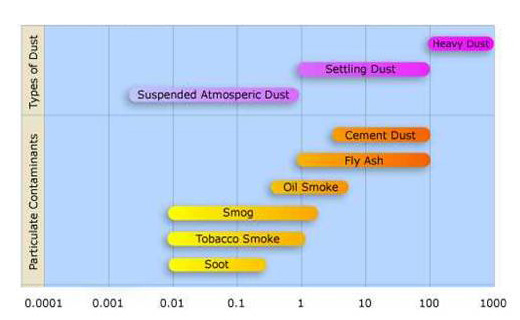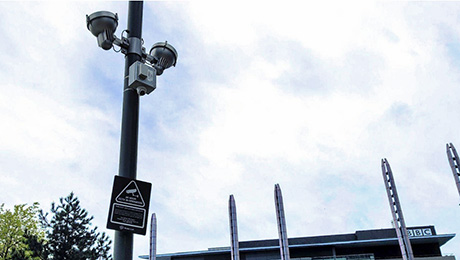Integrating particle counters into Smart Cities: real-time Air Quality Monitoring
According the the World Health Organization, particulate matter affects more people than any other pollutant and causes over 4 million premature deaths a year.
Sensors using the latest generation of laser particle counters immediately report levels of harmful particulates in the air at specific locations.
Particulate matter (PM) is categorised by size. PM1 is where particles are less than 1µm (0.001 mm), PM2.5 are bigger at ≤ 2.5µm (0.0025 mm) and PM10 larger still at ≤ 10 10µm (0.01 mm).

airborne particles. Credit: Jisaac9 CC BY 3.0
Routine air quality measurements typically describe such PM concentrations in terms of micrograms per cubic meter (µg/m3). Sufficiently sensitive measurement sensors can count suspended particles in sizes of 0.3 µm and up. The sensor uses a complex algorithm to calculate the PM1, PM2.5 and PM10 mass concentrations.
How laser particle counters work
A laser produces a narrow beam of light in which all the light waves have very similar wavelengths and are in phase. This means that laser beams stay focused.
When particles pass through a laser beam they scatter the light. The sensor measures the light scattering to count the number and size of particles in the air. It can then immediately report the concentration of different sized particles.
Measuring pollution in Smart Cities over the Internet-of-Things
Air quality monitors using laser particle counters are being used by, for example, Urban Sensing Ltd to suppy real-time data about air pollution in smart cities. They typically mount the sensors on lamp posts around the city. In such systems pollution level data can be instantly reported along with vehicle counts, footfall, temperature, wind speed, humidity and other information. The small size and easy of installation means many monitoring points can be placed around the city - mapping air pollution black spots. This high spatial resolution allows targeted measures to raise air quality and improve peoples' health.

Reference and Further Reading
Ambient (outdoor) air pollution, World Health Organization, 2018.
Find out More
For more information about integrating particle counters into smart city systems, get in touch.
Learn More
To find out more - or to ask our advice on particle counters and smart cities - enter your details below.